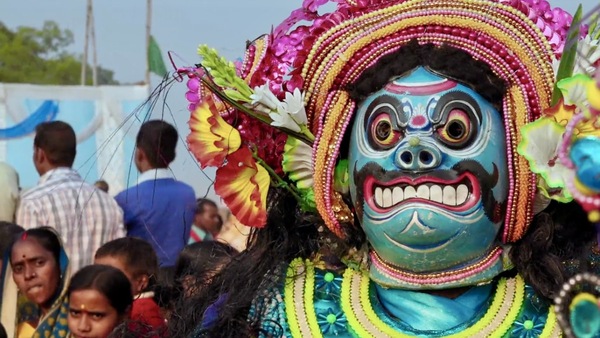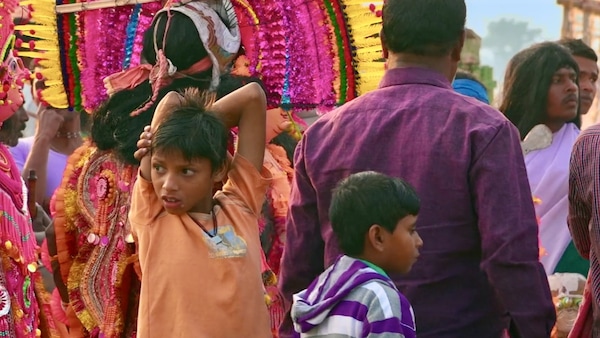Bela review: An immersive exploration of the custodians of Chhau dance, beyond masks and movements
Streaming on MUBI, fillmmaker Prantik Narayan Basu’s ‘Bela’ is a fascinating documentary on a rural community’s determination to protect a dying art form

Last Updated: 03.34 PM, Apr 18, 2022
STORY: Many may fear that Purulia’s Chhau is on the verge of extinction, but the rural folk practicing the ritualistic, traditional dance form for ages are still passionate about keeping the legacy alive.
REVIEW: Bela is every bit immersive, poignant and breathtakingly spectacular. While you’ll be looking for the regulars - a voiceover, a background score and some sort of narrative storytelling - Prantik Narayan Basu would have already swept you off your feet with the loosely tied vignettes of an art-loving village, called Bela, in West Bengal that are so obscure that you can only be curious to know more about them. In focus is Purulia district’s Chhau practitioners, who despite all odds are devoted toward preserving the vigorous semi-classical dance form that mixes martial and folk traditions. Even in the face of extinction, Chhau binds a community of people who themselves live on the margins, with meagre income and poor sources of sustenance.

For the Mahatos, Gorais and Kalindis among others, Chhau is a way of life that they take pride in and are passionate about. Even during monsoon evenings, men gyrate to the beat of tribal drums, as they all gather under the light of a 100-watt bulb tied to a pole. By day, they work in godowns. Some have even migrated to other cities in the hope of earning a little more money, but the memories of practicing and performing Chhau together keep lingering even when they are in a far-off land.
During its 59-minute runtime, the documentary delves deeper and deeper into the everyday rituals and struggles of what we would describe as a ‘simple village life’. While doing so, it was necessary to give prominence to the sexual division of labour. Indigenous women’s drudgery in firewood collection and household chores are shown unassumingly, asserting why understanding gendered labour is important when we talk about smashing patriarchy. The female folk taking turns to pound rice using the dheki make fascinating frames that typify the food cultures of India’s eastern states. Their love for the arts is not limited to movement and masks. Making motifs and symbols on floors and walls using the same rice flour paste is also a revered practice during festivals and auspicious occasions.
The thought of this tangible heritage fast becoming extinct only fortifies these practitioners’ determination to not just keep the art form alive but also improve and adapt. “The day we stop complaining and start practicing more, we will win more competitions,” says a dancer while returning home late in the night after performing at a village fair.
Bereft of music and commentary, the film treats you to the unspoiled natural beauty of this part of the country. Rain clouds and green forests are its characters too, as the camera goes on to catalogue subdued conversations, silences and serenity - all marred by time, meaning bela in Bengali.

VERDICT: Hypnotic, sensorial and all things fascinating, Bela traverses the ordinary to put forth a profound piece of research that is as important to watch and understand and it is to introspect and action. While we talk and write about preserving our cultural relics, the rural communities who have been practicing these art forms for ages are leaving no stone unturned to fiercely hold on to this legacy. And their struggle is more intense as both their identity and existence are attached to their art.
*Reema Gowalla is an arts and culture journalist, who mostly writes about theatre and independent cinema, and sometimes also delves into culinary heritage.
WHERE
TO WATCH
Subscribe to our newsletter for top content, delivered fast.
